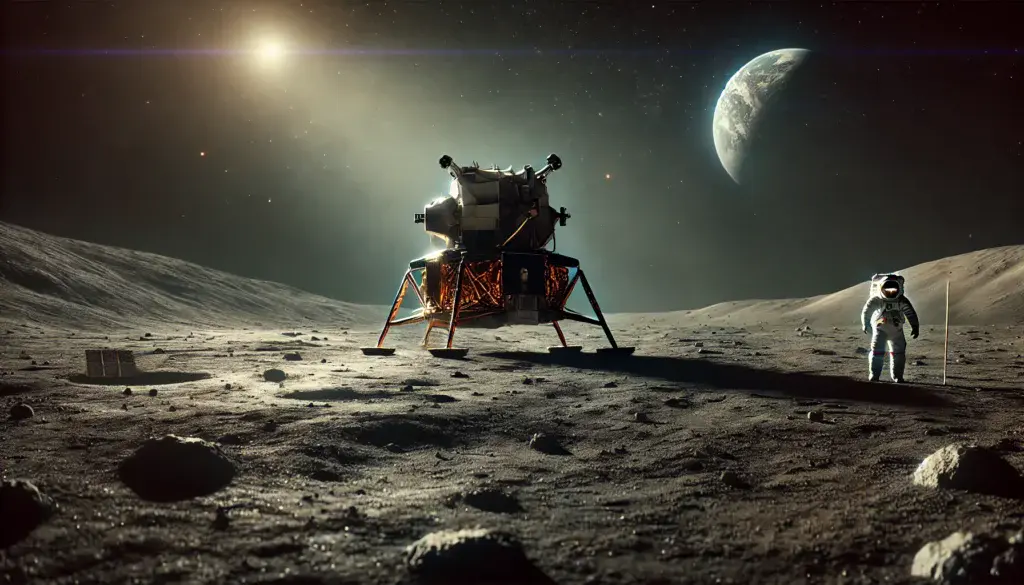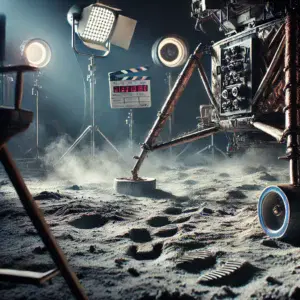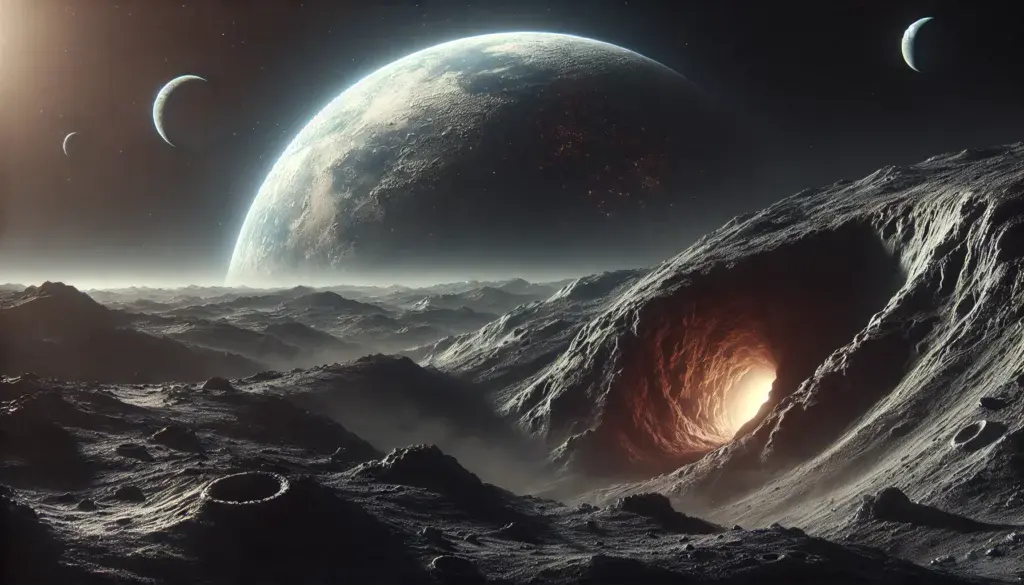The Apollo missions stand as one of humanity’s most ambitious and celebrated achievements—an era where dreams of the cosmos transformed into footprints on another world.
Between 1961 and 1972, NASA’s Apollo program defined a generation, fueling both wonder and suspicion. It was the golden age of exploration, technology, and yes, controversy.
At Unrestid Beard Co., we love to explore what lies beneath the surface—whether it’s the science behind lunar dust or the whispers of hidden truths. Let’s take a deep dive into the Apollo missions: their milestones, their impact on modern life, and the conspiracy-laced questions that refuse to fade.
The Race to the Moon: Setting the Stage
In the shadow of the Cold War, space became the ultimate frontier for national pride.
The U.S. and Soviet Union were locked in a technological showdown, pushing humanity to look skyward.
President John F. Kennedy’s 1961 declaration—“We choose to go to the Moon…”—wasn’t just rhetoric. It was a call to arms for scientists, engineers, and dreamers.
The Apollo program followed a clear progression of steps—each mission a building block toward the Moon.
The Timeline of Triumph:
-
Apollo 1 (1967): Tragedy struck before launch, when a cabin fire claimed three astronauts’ lives. It became a harsh but pivotal turning point for safety and design.
-
Apollo 7–10: Successful test flights in Earth’s orbit and around the Moon, refining everything from communication to navigation.
-
Apollo 11 (1969): Humanity’s giant leap. Neil Armstrong and Buzz Aldrin walked on the Moon, leaving behind footprints—and perhaps a few unanswered questions.
-
Apollo 12–17: Missions expanded knowledge of lunar geology, bringing back samples and deploying experiments that shaped modern planetary science.

By the end of it, 12 men had walked on the Moon. The missions weren’t just a technical feat—they were symbolic proof of what humanity could do when driven by vision, rivalry, and a dash of rebellion against the impossible.
Apollo Missions Achievements and Milestones
From building the Saturn V rocket—the most powerful machine ever constructed—to inventing computer guidance systems that fit into a suitcase, Apollo was a marvel of coordinated genius.
Key Achievements:
-
Saturn V Rocket: Standing at 363 feet tall, this behemoth remains unmatched in raw power. It could propel 100,000 pounds into lunar orbit.
-
First Human on the Moon (Apollo 11): A defining global moment broadcast live to over 600 million viewers.
-
First Lunar Rover (Apollo 15): Humanity’s first wheels on another world.
-
Lunar Science Breakthroughs: Samples collected revealed clues about the Moon’s volcanic history, cosmic bombardments, and even the early Earth.
-
Technological Firsts: Miniaturized computers, advanced materials, and new data communication methods—all pioneered under Apollo’s intense pressure.
Yet, while most saw inspiration, some saw illusion.
The Apollo Missions’ Impact on Modern Technology
The Apollo missions weren’t just about space—they shaped Earth-bound innovation in ways we still feel daily.
Tangible Impacts:

Computing Power: The Apollo Guidance Computer paved the way for microprocessors. Without it, your smartphone might still be the size of a fridge.
-
Materials Science: Heat-resistant alloys and insulation materials used in spacecraft later found their way into firefighting gear and even beard trimmers designed to resist heat and wear. (Coincidence? Maybe not.)
-
Medical Imaging: Techniques developed for spacecraft imaging evolved into modern MRI and CAT scans.
-
Wireless Communication: Apollo’s command modules inspired breakthroughs in signal processing and GPS technology.
-
Water Filtration: The systems that kept astronauts’ water pure now help millions on Earth.
In essence, Apollo didn’t just send us to the Moon—it launched us into the digital age. Every tap on a touchscreen owes something to those buzzing command modules of the 1960s.
Why the Apollo Mission Is Considered a Landmark in Space Exploration
The Apollo missions didn’t just explore space—they expanded human consciousness.
For the first time, we saw Earth as a fragile blue marble, suspended in darkness. That image alone shifted humanity’s view of itself—fueling environmental movements, global cooperation, and spiritual reflection.

Apollo redefined what it meant to be explorers. It demonstrated that with courage and creativity, humanity could transcend its limits.
It united millions under a single dream. And even though no human has returned to the Moon since 1972, its echoes still shape every new mission, from Mars rovers to the Artemis program.
Fun Fact:
Neil Armstrong’s space suit was handmade by seamstresses who also worked on Playtex bras. Precision stitching wasn’t just a skill—it was life support on the lunar surface.
Apollo Missions Conspiracy Facts
Now, we enter the side of the Moon that stays forever in shadow—the realm of speculation, skepticism, and mystery.
Ever since the 1969 broadcast, some have questioned what they saw. Were those grainy black-and-white images the result of groundbreaking exploration… or a clever performance staged in a desert hangar?
The Theories That Persist:
-
The Moon Landing Hoax: Perhaps the most famous theory of all. Critics point to lighting anomalies, the lack of stars, and the “fluttering” flag as signs of studio trickery.

-
Stanley Kubrick’s Involvement: Some claim the visionary director was hired to film the Moon landing footage, given his expertise from 2001: A Space Odyssey.
-
Van Allen Radiation Belts: Skeptics argue that astronauts couldn’t have survived the radiation levels, suggesting they never left Earth orbit.
-
The Missing Tapes: NASA admitted that some original Apollo 11 footage was accidentally erased—adding fuel to the conspiratorial fire.
-
The Secret Missions Theory: Whispers persist that Apollo 18, 19, and 20 existed—missions hidden from the public to explore “something” found on the Moon.
Of course, NASA maintains there’s overwhelming evidence the missions were genuine: lunar rocks analyzed globally, retroreflectors still used by scientists today, and independent tracking by other nations. But as with all great mysteries, doubt has its own gravity.
Fun Fact:
Buzz Aldrin once punched a man who accused him of faking the Moon landing. Let’s just say, gravity isn’t the only thing that hits hard.
Between Triumph and Mystery
The Apollo missions embody both fact and fascination—an intersection where science meets myth. Whether you see them as proof of human genius or part of a grand illusion, they’ve become a symbol of humanity’s dual nature: driven to explore, yet forever questioning.
At Unrestid Beard Co., that’s what we stand for—curiosity, craftsmanship, and a healthy suspicion of the obvious. Be it beard oils or moon rocks, we like to know what’s really beneath the surface.
So, next time you trim your beard under the pale lunar glow, consider this: the same human hands that crafted rockets to touch the stars also built the tools that shape your daily ritual. And somewhere, in that shared pursuit of perfection, lies the real story of Apollo.
Closing Thoughts: The Moon and the Mirror
The Apollo program wasn’t just a scientific triumph—it was a mirror reflecting humanity’s contradictions. It showed our brilliance and our doubt, our unity and our division, our yearning to believe and to question.
Maybe that’s why it still captivates us.
Because somewhere between the shining truth and the shadow of conspiracy lies the essence of human curiosity—the restless spirit that refuses to be satisfied with the surface.
And at Unrestid Beard Co., that’s exactly the kind of spirit we admire.




